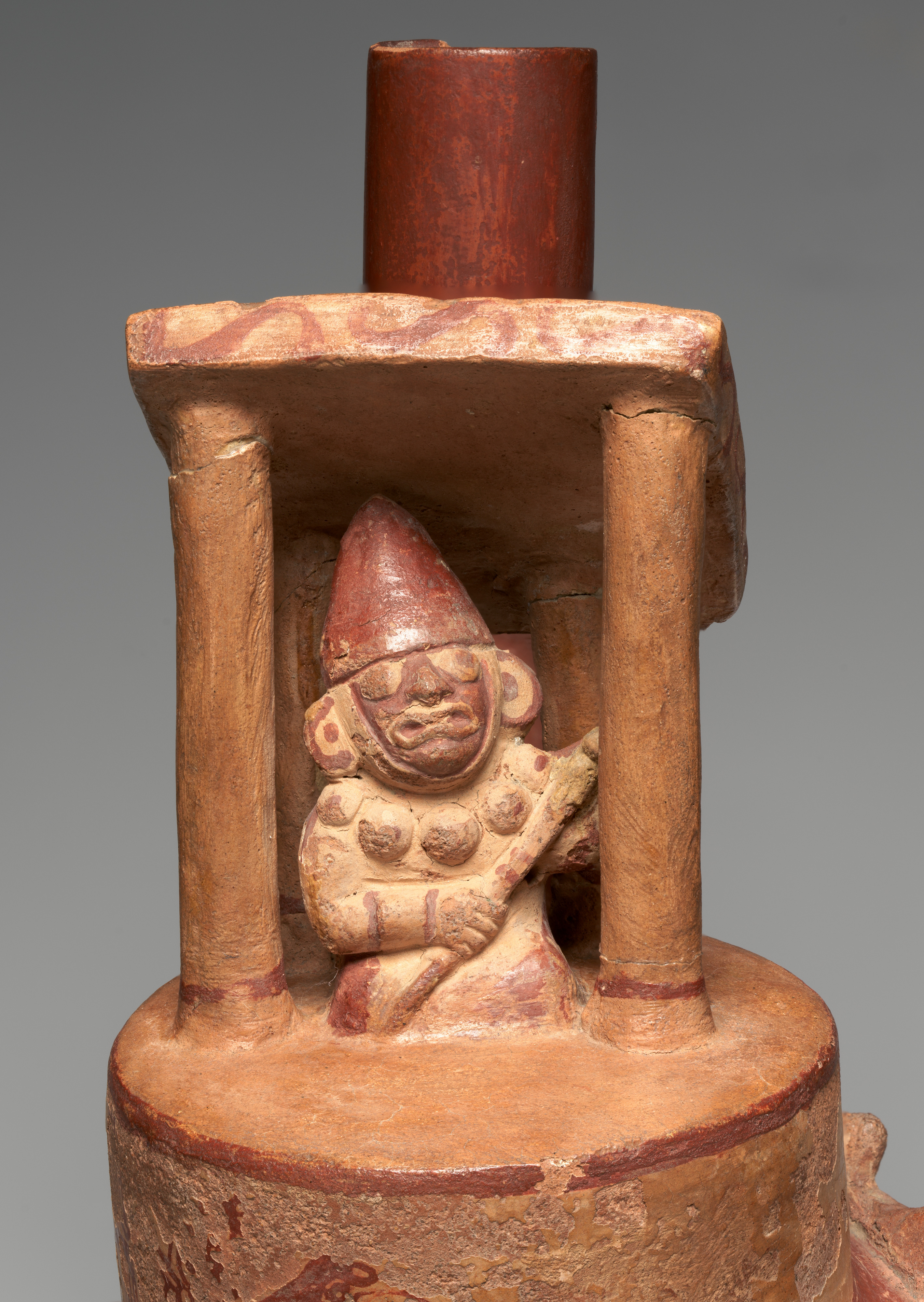Architectural Vessel
Not on view
This vessel is modeled in the shape of a spiral platform surmounted by an open-sided structure with a figure inside. The vessel itself is a bottle, with a spout in the shape of a stirrup, a characteristic shape on Peru’s north coast from the first millennium B.C. through the later part of the first millennium A.D. The spiral platform is ornamented with a procession of snails, sculpted in high relief, and felines, painted in red slip, ascending to the summit where a figure is depicted within a four-posted, roofed structure on a circular podium. The figure wears a conical headdress, ear ornaments, and a beaded collar, and holds a war club across his chest.
Finely made and delicately painted, this bottle would most likely have been used in Moche ceremonial contexts before its ultimate deposition in a burial. The Moche culture flourished on Peru’s north coast from A.D. 200 to 800. Powerful men, and sometimes women, ruled over regional centers in the fertile river valleys of this otherwise arid desert region. Moche sites were characterized by monumental pyramidal platform mounds made of mud brick, often ornamented with polychrome reliefs. Moche artists were renowned for their achievements in metallurgy as well as for their sophisticated ceramic traditions featuring ritual and mythological scenes.
Modeled and painted ceramic bottles were a favored form for Moche artists, as they were for their predecessors, the Salinar and the Gallinazo cultures. Of the thousands that have survived to the present day, several hundred feature architectural structures. Some emulate monumental platform mounds, occasionally with a figure at the summit, while others focus on a specific structure located within a larger complex. A number of Moche vessels depict spiral platforms, but actual spiral platforms are fairly rare in the archaeological record. A notable example of a monumental spiral platform was excavated at the site of Moche, on the plain between the two architectural complexes of Huaca del Sol and Huaca de la Luna.
Few architectural vessels have been excavated under controlled conditions, but of those that have, they have been found in both middle- and high-status burials of adult women, young males, adolescents, and children. Some have been found in burials close to ritual architecture, and the representations themselves often refer to processional ways and places of sacrifice. This effigy perhaps served as an emblem of the power and potential of the sacred architecture it emulated.
Joanne Pillsbury, 2015
Due to rights restrictions, this image cannot be enlarged, viewed at full screen, or downloaded.
This artwork is meant to be viewed from right to left. Scroll left to view more.






